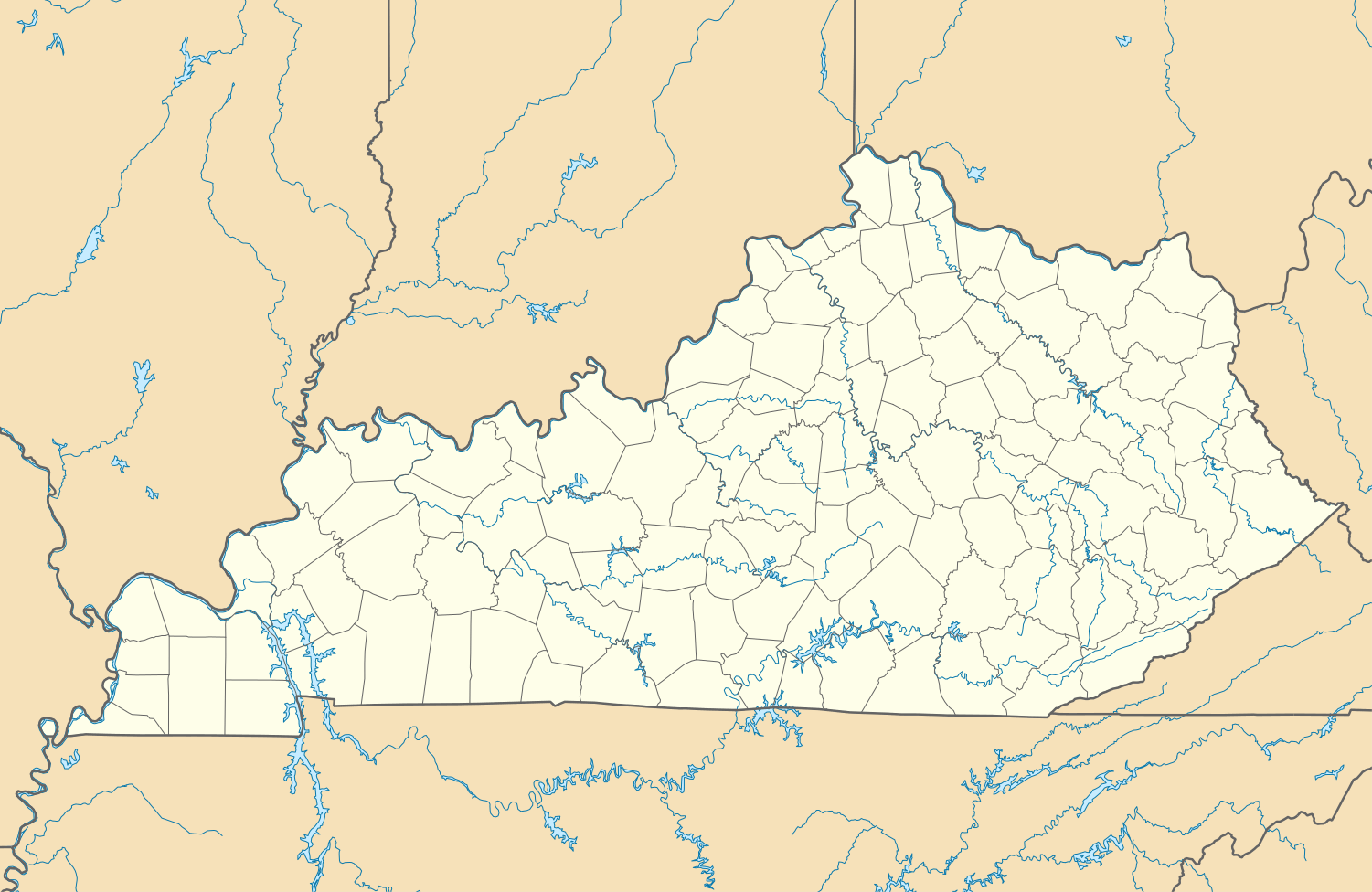Ohio Falls Station
| Ohio Falls Station | |
|---|---|
 Location of Ohio Falls Station in Kentucky | |
| Country | United States |
| Location | Louisville, Kentucky |
| Coordinates | 38°12′N 85°52′W / 38.20°N 85.87°WCoordinates: 38°12′N 85°52′W / 38.20°N 85.87°W |
| Commission date | 1926 |
| Owner(s) | Louisville Gas & Electric |
| Power generation | |
| Units operational | 8 |
| Nameplate capacity | 80 MW |
Ohio Falls Station is a hydroelectric power station operated by Louisville Gas & Electric and located three miles west of Downtown Louisville, Kentucky. The Ohio Falls Plant was built along the Ohio River in Kentucky in 1923 by Byllesby Engineering and Management Corporation. The plant featured eight 10.4 MW units operating at roughly 13,500 hp per unit. Each unit was composed of Allis Chamber turbines and General Electric generators.[1] The plant is located inside the Ohio Natural Wildlife Conservation Area and is considered a large impoundment hydro power plant.[2] The station was built after a canal and dam within the Ohio river in an attempt to allow boats to navigate the 8ft vertical drop among the falls the spanned 2 miles wide. Production of the canal and dam began in 1825. It was not until repair on the dam was needed that Louisville engineers had the idea of building a hydroelectric station to harvest the power of the falls.[3]
History of The Ohio Falls Generating Station
At first the U.S. Army Corps Engineers had deemed the falls an unsuitable site for a hydroelectric facility due to the inconsistent water levels of the river. The high levels depleted the water falling from the rapids and the rivers lows did not provide flows strong enough to move a turbine. In 1912 a Major of the Army corps revisited the research done on the falls and determined that the falls could in fact be the site of a hydro electric plant.
Improvements
The water entering the dam spins the blades within the turbine, rotating the generator and producing electricity. The Ohio Falls Plant features eight 10.4 MW turbine generator electricity units. At its inception the Ohio Falls Plant generated enough energy to power the city of Louisville, but as the city grew the source became insufficient. [4]The dam is owned and ran by the U.S. Army Corps Engineers who operate the navigation of the flow of the dam into the river. The U.S. Army Corps Engineers place priority in environmental conservation and controlling the water levels within the river. This limits the ability for the plant to optimize electricity production. LG&E and KU are currently investing in the plant to increase its production without damaging the ecosystem. LG&E and KU have implemented a three phase reconstruction plan. Phase 1: Was completed in 2002 and involved updating equipment technology to have automated and remote operation capabilities. Phase 2: was completed in 2004-05 and focused on regulating waste that enters the dam and could damage the machines. This included adding "trash-rack cleaning machine, sluice gate and trash racks" to filter out trash that flows through the river into the dam. Phase 3: Scheduled to be finished in 2017 includes a final restoration of the units including, "new runner, rewinding the generator, stator restack, converting rotating exciter to static excitation and refurbishment of wicket gates." [4] As part of the remodeling of the plant a computer model was created to determine the optimal size and shape of the turbines to ensure maximum productivity from the plant. This allows the plant to produce more energy while operating at wider variety of water levels. [4]
Electrical Production
The overall production capacity of the Ohio Falls plant is 80 megawatts. Based on the calculation of the average American resident electricity usage of 3,000 kilowatts a year the plant is capable of providing power for 233,600 residents. (80,000,000/1,000=80,000 x 24 hours/ day x 365 days/year=700,800,000 kilowatt-hours/3,000=233,600 residents).[5]
Costs of Production
The LCOE (levelized cost of energy) for hydropower is 83.5/MWh. If the Ohio Falls Plant was built today it would cost $58,516,800 to build and operate over its lifetime. [6]
Benefits of the Station
Environmental Benefits
- Clean generation of energy: no emissions generated
- Renewable source of energy: sun beams facilitate water movement- not depleting natural resources
Economic Benefits
- .Louisville are is able to independently generate electricity without relying solely on outside sources of power
- Hydropower has a lower levelized cost of energy compared to other traditional power sources such as coal
See also
References
- ↑ "Modernization of the Ohio Falls Hydropower Plant". www.hydroworld.com. Retrieved 2016-11-30.
- ↑ "Types of Hydropower Plants | Department of Energy". energy.gov. Retrieved 2016-11-30.
- ↑ Johnson, Parish, Leland R., Charles E. (2007). Triumph at the Falls: The Louisville and Portland Canal. Louisville, Kentucky: U.S. Army corps of Engineers.
- 1 2 3 "Ohio Falls Generating Station | LG&E and KU". lge-ku.com. Retrieved 2016-11-23.
- ↑ "How Hydropower Works". www.wvic.com. Retrieved 2016-11-28.
- ↑ "Levelized Cost and Levelized Avoided Cost of New Generation Resources in the Annual Energy Outlook 2015" (PDF). http://www.eia.gov/forecasts/archive/aeo15/pdf/electricity_generation_2015.pdf. U.S. Energy Information Association. External link in
|website=(help)